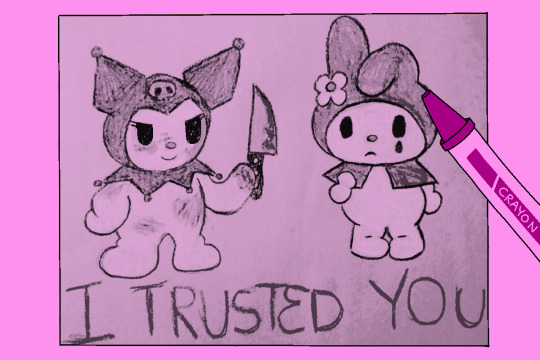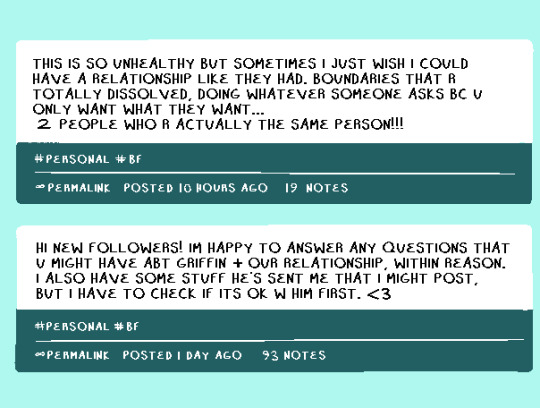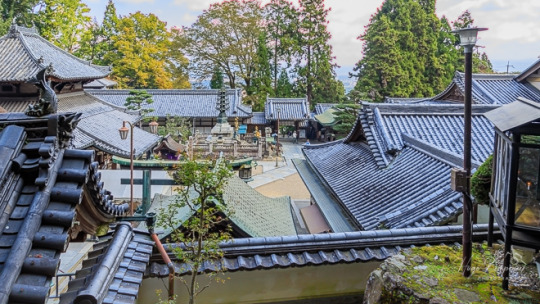#Kukai
Explore tagged Tumblr posts
Text
"The mind is like an inn. An inn is not a permanent home. It keeps moving according to its itinerary and never stays in one place. Thus, since there is nothing fixed in all things, it is better to avoid the vile and choose the precious." - Kukai

- Kukai (b. 27 July 774 – d. 22 April 835), posthumously called Kōbō Daishi ("The Grand Master who Propagated the Dharma"), was a Japanese Buddhist monk, calligrapher, and poet who founded the esoteric Shingon school of Buddhism.
"心は宿のようなものである。宿は定住する家ではない。日程によって移動を続け、一つに留まるこ��がない。このようにすべてのものには定まったものがないのだから、卑劣なものを避けて尊いものを選ぶと良い。" ー 空海
―空海(くうかい、774年7月27日生 - 835年4月22日没)は、日本の僧侶、書家、詩人で、真言密教の創始者であり、「弘法大師」とも呼ばれる。
157 notes
·
View notes
Text
youtube
Yamamba makeup tutorial by Kukai (sorami) ♡
#yamamba#gyaru#gyaru fashion#gyaru makeup#gal#ギャル#jfashion#kurogyaru#yamanba#Yamamba makeup#Youtube#Kukai#sorami#av gyaru
74 notes
·
View notes
Text
April 12, Xi'an, China, Qinglong Temple/青龙寺 (Part 3 - History):
A model of Qinglong Temple in Tang dynasty (618 - 907 AD):

There must have been something like thirty engravings of famous poems about the temple lining the walls of the corridors. Below are three examples of these engravings, from these poems one can get a feel for how Qinglong Temple used to look like. A note on the translations: they are rather unpolished as I just wanted to get the meaning across.

《題青龍寺詩》 [唐] 朱慶餘 寺好因崗勢,登臨值夕陽。 青山當佛閣,紅葉滿僧廊。 竹色連平地,蟲聲在上方。 最憐東面靜,為近楚城墻。
Translation (by me):
"In Commemoration of Qinglong Temple" By Zhu Qingyu (Tang dynasty) The beauty of this temple comes from the mountains, By the time I summited it was already dusk. Verdant peaks behind temple buildings, Scarlet leaves filling the corridors. Bamboo groves connecting flat areas, Chirping of insects above it all. Only the east side remains still, Since it's close to the city walls.

《清明日青龍寺上方賦得多字》 [唐] 皇甫冉 上方偏可適,季月況堪過。 遠近水聲至,東西山色多。 夕陽留徑草,新葉變庭柯。 已度清明節,春秋如客何。
Translation (by me):
"Qingming Festival Above Qinglong Temple" By Huangfu Ran (Tang dynasty) It's comfortable up in the mountains, Watching the season pass by. Sounds of flowing water from near and far, Views of mountains from east and west. Setting sun upon the grassy path, Growing leaves cover the courtyard trees. Qingming Festival has come and gone, Just like the seasons and the temple visitors.

《青龍寺早夏》 [唐] 白居易 塵埃經小雨,地高倚長坡。 日西寺門外,景氣含清和。 閑有老僧立,靜無凡客過。 殘莺意思盡,新葉陰涼多。 春去來幾日,夏雲忽嵯峨。 朝朝感時節,年鬓闇蹉跎。 胡爲戀朝市,不去歸煙蘿。 青山寸步地,自問心如何。
Translation (by me):
"Early Summer at Qinglong Temple" By Bai Juyi (Tang dynasty) Light shower settled the dust, Temple grounds blending with the hills. Setting sun outside temple gates, The scene filled with an air of serenity. An old monk stands in idleness, There are no worldly passersby in the stillness. Remaining birds having sung their melodies, New leaves providing ample amounts of shade. End of spring was just days ago, Summer clouds are already towering above. Every day we feel the passing of seasons, Our hair graying in the meantime. Why obsess over bustling cities, When we can return to the lush countryside? These verdant mountains are but a corner of the world, Here I stand and reflect upon the state of my heart.
Huiguo and Kukai
In the first part I mentioned that Qinglong Temple was where Kukai/空海 studied Vajrayana Buddhism (the Chinese Esoteric tradition was also called "Tangmi"/唐密, since it was very popular in Tang dynasty) under Huiguo/惠果. Huiguo was a student of the famous Vajrayana Buddhist master and translator Amoghavajra (Chinese name Bukong/不空). Huiguo eventually became a master himself in the Chinese Esoteric tradition, and was an Acharya (Sanskrit term meaning teacher; translated phonetically as asheli/阿阇黎 in Chinese) who had many students from different places, including from surrounding countries. Kukai was one of his last notable students before he passed away. Kukai returned to Japan in 806 AD and founded the Shingon school of Buddhism/真言宗 (also sometimes called Eastern Esotericism/東密).
Kukai was also a calligrapher and a poet, below are two examples of his works (first is an ink rubbing of his calligraphy work titled "Buddha", second is his calligraphy work named Huushincho/風信帖; both were written in Chinese):


Closeup of Huushincho (from Wikipedia). The original is at Touji Temple in Kyoto, Japan.

Shōryō shu/Xinglingji/性靈集, a collection of kanshi by Kukai. Kanshi/漢詩 is a Japanese word for Chinese poetry. These books here are a gift from Japan.

Bunkyō hifu ron/Wenjingmifulun/文鏡秘府論 by Kukai which discusses Chinese poetry. These books are a gift from Japan.

There are also other gifts from Japan. Left is the top of a khakkhara staff (In Chinese and Japanese: xizhang/锡杖/錫杖, shakujō/錫杖). Right is a Vajra (in Chinese and Japanese: jingangchu/金刚杵/金剛杵, kongosho/金剛杵), this is a Vajrayana ritual object. This particular Vajra is commemorative and bears the names of Huiguo and Kukai:


And that's all for Qinglong Temple. Next up is another famous temple in Xi'an, Daci'en Temple/大慈恩寺.
#2024 china#xi'an#china#qinglong temple#buddhist temple#history#chinese history#vajrayana buddhism#kukai#huiguo#buddhism#poetry#chinese poetry#my translations
98 notes
·
View notes
Text

Detail of Kōbō Daishi (Kūkai) as a Boy (Chigo Daishi). Artist unknown, 1400s.
#kobo daishi#kukai#shingon#buddhism#hermit#japanese art#1400s#ink and color#silk#art institute of chicago#pattern#ornament#lotus
16 notes
·
View notes
Note
what is “what happens next” about if you don’t mind me asking? :)
i've been sitting on this ask for a while now because WHERE! DO I! BEGIN!!!!
ok. so. what happens next is a currently ongoing webcomic by max graves, beginning late in 2021. it is a story told in multiple chapters about multiple characters, but one could argue that its protagonist is milo holliday. milo is a trans man, pastel blogger, toy customizer... and accomplice to a murder.
one of the first panels of the comic is a screenshot of the dni page on milo's tumblr, which got me IMMEDIATELY interested in the comic because it's such a unique way of storytelling:

[image description available for the above]
and we get a lot more pages like this that are screenshots of websites, social media profiles, and the like. the comic is a mixture of in-person interactions, online communication, and occasional flashbacks, all of which are important pieces of the story.
so when they were teenagers, milo's best friend griffin petty killed two people, and milo helped mutilate one of the bodies. while griffin was sent to prison, milo spent years in a psychiatric institution that stunted his emotional growth and forever altered his view of the world. a drawing he makes while institutionalized provides a window into milo's perceptions of the event:

[image description available for the above]
the whole comic is an uncomfortably accurate reflection of mid-2010s tumblr culture, right down to the sanrio traumacore and crytyping. milo's suffering is multifaceted: in reference to the people harassing him online, he says "it doesn't feel like they hate me for what i did... it feels like they hate me for the way i am," referring to his being an autistic trans man. and given that many of his detractors seem to come from sites like kiwifarms (notorious for its transphobia and ableism), he isn't entirely wrong! but at the same time, his relentless depictions of himself as the victim erase his contributions to haylie's death and the ways he's made himself and others' problems worse.
not every part of the comic is about milo, though! i'm only scratching the surface of it here: all of those pages and links are for the first part, titled "dog names." in the second part, "someone else," we're introduced to gage ludemann, a gore blogger and true crime fan who has entered a long-distance relationship with griffin, and once again, screenshots are used to masterful effect:

[image description available for the above]
but screenshots and characters' drawings are one thing, and max's art is another. starting in the third part, "no matter what," panels are shown in full color, and his color choices are great. what i really love, though, is the amount of detail max puts into character design and facial expressions. i could show you so many different panels that i think show off max's art, but i'll try to narrow it down to one:

[image description available for the above]
soooo yeah!! i have SO MANY THOUGHTS about this webcomic and i keep trying to get close friends to read it, haha. i've read a lot of webcomics and i can say with certainty that there is NOTHING out there quite like what happens next. it's a story about true crime fanaticism, psychological trauma, social media presences, existing as a transgender person, and so much more. the comic is currently on its fifth part, "you'll all be sorry," which seems to be about the characters vikki escamilla and xandra blumberg. if you decide to check it out please feel free to tell me all about it! i'm not connected to the comic at all, but i really love it and i think everything about it is just fascinating.
and max graves, if you're somehow reading this... hiiiiii i'm a huge fan!!! love your work!!! i hope i've represented it at least somewhat accurately here!
@kukai
#what happens next#whn#txt#ask#russell talks#russell does stuff#text heavy#kukai#untagged otherwise#i hope i did the image ids alright! i've hardly ever done them before#ok to reblog
71 notes
·
View notes
Photo

Hozan-ji on Mount Ikoma, Nara Prefecture Japan.
#Buddhism#Daisho-Mudo-ji#Hokan-ji#Hōzan-ji#Ikoma-Shoten#Japan#Kankiten#Kukai#Mount Ikoma#Nara#Tankai#仏教#大聖無動寺#奈良#宝山寺#日本#湛海#生駒山#生駒山 寶山寺#生駒聖天
62 notes
·
View notes
Text
THIS IS MY LEGACY

9 notes
·
View notes
Text

Kūkai (空海), 1984, directed by Junya Sato - film poster
Kukai (774-835 CE), aka Kobo Daishi, was a Japanese Buddhist monk who founded the Shingon school of Buddhism. The film focuses on the period of his travel and study in China.
8 notes
·
View notes
Text
Japanese Myths in Dungeons & Dragons
D&D is if anything a playground for brewing cocktails of legendary stories. Stories steeped in a broth of human experiences that penetrate the greater depths of our psyches. I don’t know about you, but that’s half the incentive — to try on new ways of being, seeing, and moving through the world. I’ve long had an interest in researching the East Asian aspects of D&D and took a moment during…

View On WordPress
#animism#buddhism#dnd#dungeons and dragons#folklore#folklorist#game design#game designer#game studies#japan#japanese literature#japanese mythology#japanese studies#kukai#myth#mythologist#Mythology#oni#role-playing#roleplay#Shingon#shinto#spirits#yokai#zen
7 notes
·
View notes
Photo

A painted image of the Shingon founder Kūkai (空海) a.k.a. Kōbō Daishi (弘法大師) (774-835) manifesting a sun disc halo along with a sword & prayer beads while lecturing at the palace on his text, “The Secret Key to the Heart Sutra” (般若心経秘鍵)
Dating to the Muromachi period (1336-1573) from the collection of Ryūkōin Temple (龍光院) on Mount Kōya (高野山) in Wakayama Prefecture
Image from the twitter account of the monk Fujiwara Eizen (藤原栄善)
#japanese art#buddhist art#buddhist monk#空海#kukai#弘法大師#kobo daishi#真言宗#shingon#高野山#koyasan#mount koya#高野町#koya town#龍光院#ryukoin#和歌山県#wakayama prefecture#般若心経#hannya shingyo#heart sutra
35 notes
·
View notes
Note
HAPPY BIRTHDAY SUNNY!! I hope it is a lovely and memorable one :) <3
Thank you, Lynx!!

4 notes
·
View notes
Text
"There are superior and inferior human capacities and their teachings are not identical. There are innumerable medicines for different ailments and many vehicles for different uses. But if you look at the essence, there is only one purpose." - Kukai

- Kukai (b. 27 July 774 – d. 22 April 835), posthumously called Kōbō Daishi ("The Grand Master who Propagated the Dharma"), was a Japanese Buddhist monk, calligrapher, and poet who founded the esoteric Shingon school of Buddhism.
It is natural for human beings to have different abilities. This is not about comparing or competing on the basis of superiority or inferiority, but about understanding individual abilities and learning accordingly. However, the essence of life is the same for everyone. This, he says, is true equality.

"人間の能力には優劣があり、その教えは同一ではない。さまざまな病気に効く薬は無数にあり、さまざまな用途の乗り物もたくさんある。しかし、本質に目を向ければ、目的はひとつしかない。" ― 空海
―空海(くうかい、774年7月27日生 - 835年4月22日没)は、日本の僧侶、書家、詩人で、真言密教の創始者であり、「弘法大師」とも呼ばれる。
人によって能力が違うのは自然なこと。どちらが優れているか、劣っているかを比較したり競争したりするのではなく、それぞれの能力を理解し、それに応じて学ぶことが大切なのだ。しかし、人生の本質は誰にとっても同じである。これが真の平等であると言っている。
110 notes
·
View notes
Photo

Kūkai wards off a demon by reciting the tantra.[8] Painting by Hokusai (1760–1849)
20 notes
·
View notes
Text
Photo of the Day: Kukai
This is not Japan, but rather near my house in Honolulu. Shingon Buddhism is one of the larger sects of Buddhism in Japan. Kukai was the monk who brought it from China to Japan. He is a legendary figure so it is difficult to separate fact from fiction, but he was a real person. The 88 Temple pilgrimage on the island of Shikoku was dedicated to him. If you enjoyed this photo, please visit my…

View On WordPress
2 notes
·
View notes
Photo

Mont Kōya
Le mont Kōya (alias Koyasan), situé dans la préfecture de Wakayama, au sud d'Osaka, au Japon, est le site d'un complexe de temples fondé en 819 par le moine érudit Kūkai pour servir de siège au bouddhisme Shingon. Il y a des temples et des bâtiments sacrés autour de la base de la montagne, sur ses pentes et sur le plateau sommital qui se trouve à 820 mètres au-dessus du niveau de la mer. Le mont Kōya est classé au patrimoine mondial de l'UNESCO.
Lire la suite...
2 notes
·
View notes
Text



📿 Pilgrimage to Sekkeiji – Temple 33 of the Shikoku 88 Route 📿
Nestled in the heart of Kochi City, Sekkeiji (雪蹊寺) stands as the 33rd temple of the sacred Shikoku Pilgrimage (四国遍路). Devotees from across Japan and beyond walk this path in search of spiritual growth, reflection, and enlightenment.
At Sekkeiji, the Yakushi Nyorai (薬師如来), the Medicine Buddha, is enshrined, offering blessings of healing, protection, and wisdom. Whether you seek physical well-being or a deeper spiritual journey, the temple’s serene atmosphere and rich history provide solace to all.
Many Mahayana practitioners believe that walking the Shikoku Pilgrimage strengthens one’s karmic path, allowing for a connection with the teachings of Kūkai (空海, Kōbō Daishi), the revered founder of Shingon Buddhism.
🌿 Have you visited Sekkeiji or another temple on the Shikoku Pilgrimage? Share your experiences in the comments! 🌿
📍 Google Maps 📞 +81 88-837-2233
#ShikokuPilgrimage#88Temples#MahayanaBuddhism#YakushiNyorai#Temple33#Kukai#ShingonBuddhism#BuddhistPilgrimage#JapaneseTemples#HealingBuddha#SpiritualJourney#JapanTravel#KochiPrefecture#photography#nature#culture
2 notes
·
View notes